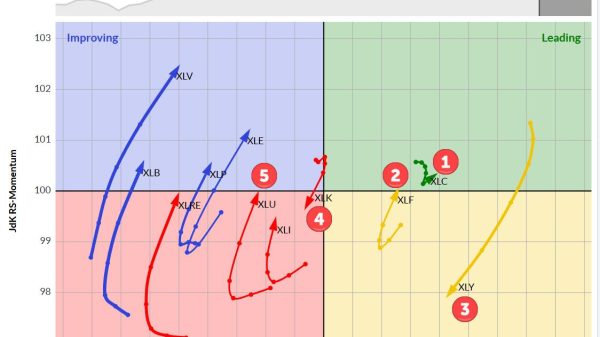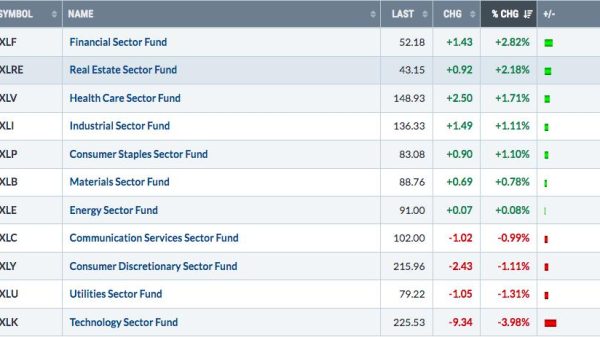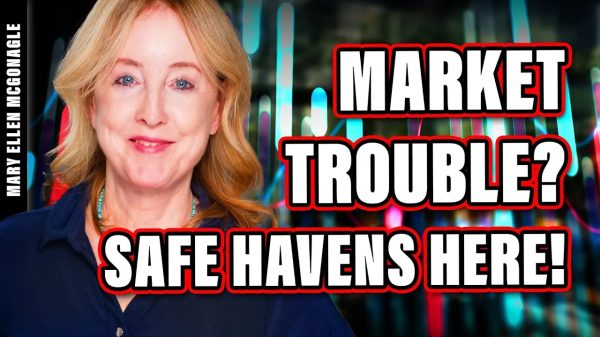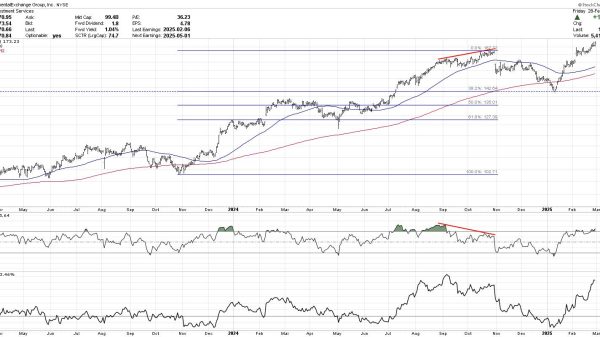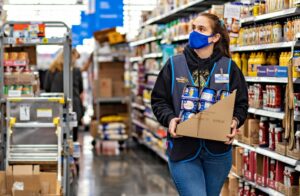ATLANTA — As economists and investors scour data on inflation, jobs, housing, banking and other bellwether indicators to determine whether the United States is headed for a recession, a visit to the nation’s largest food-bank warehouse offers some ominous clues.
More than half of the shelves at the Atlanta Community Food Bank are bare, in part because of supply-chain issues, but mostly because demand for food assistance is as high as it was during the COVID-19 pandemic, the nonprofit’s executives said. They said two in five people seeking food assistance in the Atlanta region this year have not done so before.
“Nobody anticipated this,” said Debra Shoaf, chief financial officer of the private charity, which relies on corporate and individual donations, as well as government grants, to distribute food to the hungry in 29 Georgia counties. Ms. Shoaf, who also serves on the finance steering committee for the national charity Feeding America, says she’s hearing similar reports across the United States. “We’re back up to pandemic levels,” she said.
In some regions, demand is exceeding even the starkest days of the COVID pandemic. In central Ohio, the local food bank says the number of households seeking aid has increased by nearly half since last year.
More than 11.4 million households collected free groceries in early April, up 15% from a year ago, according to data from the Census Bureau.
“Food banks have been around for 50 years, but this is the first time we are seeing unprecedented high food demand combined with historically low unemployment rates,” said Vince Hall, chief government relations officer for Feeding America, which supports 60,000 food pantries.
The sustained demand comes as most government pandemic emergency aid ends — notably, temporary COVID-related increases to the Supplemental Nutrition Assistance Program (SNAP), formerly known as food stamps, a federal program that provides debit cards to directly purchase food at stores.
Inflation is a major factor, too: Grocery prices have increased 23% since March 2020, when the pandemic began, according to the US Bureau of Labor Statistics.
Such post-COVID demand for free food is “not a good signal” for the economy “and perhaps an indicator of an impending recession,” said John Lowrey, a business professor at Northeastern University whose research focuses on food bank management and public health.
“The fact that we have a lot of first-time users who are no longer concerned about the stigma of going to a food pantry — and actually see value in it because they can no longer afford retail food — is a reasonable proxy for the health of the economy and consumers,” Mr. Lowrey said.
Craig Gundersen, a Baylor University economics professor who is a prominent researcher for Feeding America, said that food banks experiencing spikes above COVID levels are outliers. It is not surprising, he said, to see an increase in demand this year because the government provided so much assistance during the pandemic emergency. He also noted that SNAP benefits, adjusted upward following a mandated review in 2021, remain higher now than they were four years ago.
“We had the stimulus checks, for a long time people didn’t have to pay their rents and unemployment benefits were higher than wages,” said Mr. Gundersen.
Michael McKee, CEO of the Blue Ridge Area Food Bank, which serves 25 counties astride the Appalachian Trail in Virginia, said COVID emergency assistance masked underlying economic realities. According to the latest available figures from the Bureau of Labor Statistics, inflation has outpaced wage gains since March 2020.
“What’s happening now reveals the scope, scale and pervasiveness of food insecurity in this country and the effects of inequality, not just more recently from inflation, but the inability of wages to keep up with the cost of living,” Mr. McKee said.
‘UNCHARTED TERRITORY’
A complicating factor: the issue of government food assistance has become entangled in the debate among lawmakers about whether to raise the country’s borrowing limit.
Republicans in Congress have proposed limiting food assistance as part of a package of measures to combat what US House Speaker Kevin McCarthy said was President Joseph R. Biden’s “reckless spending.”
President Biden has slammed the Republican proposal and argued it would harm low-income Americans. Anti-hunger advocates told Reuters that policies that make it more difficult for people to access SNAP could put further strain on food banks and other emergency food providers.
The SNAP government program is by far the largest method of feeding the hungry in the United States. Food banks and pantries account for about a tenth as many meals distributed, but they are still the second-largest provider and therefore serve as a critical part of the social safety net.
As temporary COVID-era supplements to SNAP have ceased, food banks from Georgia to Colorado to Virginia say demand for their services has grown.
The Mid-Ohio Food Collective, which operates in 20 counties, reported a roughly 45% increase in household pantry visits in the first three months of this year, compared to last year — from about 270,000 to about 390,000.
“We’re in uncharted territory,” said the charity’s spokesman Mike Hochron. “Household budgets are tight and more people than ever are turning to the emergency system to stave off hunger.”
Houston Food Bank Chief Executive Brian Greene, who has worked in the industry since 1988, said it is difficult to make comparisons over time because demand has historically outstripped supply. He said the Houston Food Bank, the nation’s largest by volume, is distributing less food this year than last but that is because cash and food donations are down.
“If we had as much food as we had during the pandemic, we would distribute it,” he said.
Pantries supplied by the Blue Ridge food bank in Virginia also reported recent spikes. In April 2021, the Dulles South Food Pantry served 109 families a week. In April of last year, it helped 147. This month, the figure is 183 families a week.
The Highland Food Pantry in Winchester, Virginia, said it served about 90 families a week during the pandemic. This month, it’s serving about 135. Among the new clients is Haywood Newman, a 47-year-old handyman, who made it through COVID without assistance but says he’s struggling now.
“You’ve got to pay your water, trash, electric, car and rent — those companies aren’t going to help you out,” Mr. Newman said.
RAZOR-THIN MARGINS
In Atlanta, the nation’s largest food-bank warehouse sprawls over four acres. Supply director Michelle Grear said it was designed to store about 5 million pounds of food, much of which is donated on pallets by food manufacturers and grocery stores. Last month, the inventory average was just 1.8 million pounds, she said.
The food that arrives is flying off the shelves, in many cases claimed by street-level pantries within hours. In March, the warehouse received 9.8 million pounds and distributed 9.6 million pounds, a razor-thin margin, according to Ms. Grear.
Sharawn White, a 31-year-old single mother who earns about $18 an hour at a property company, visited an Atlanta-area pantry for the first time this month. After paying daycare, rent and utility bills, Ms. White said she has about $300 left a month for food, gas and unexpected expenses.
In early April, White visited a community center to donate old clothes and noticed a line for the food pantry. “It ended up being a huge blessing,” she said.
Like most regional food banks, the one in Atlanta relies on government-funded programs and corporate and manufacturer product donations to obtain their food — they try not to spend cash to procure food on their own, except in crisis. In Atlanta, product donations from corporations and farmers have remained largely steady, accounting for more than half of the food distributed, according to the food bank’s records. But the ratio of government funding has changed dramatically.
Pre-pandemic, government-funding provided about 27% of the goods the Atlanta charity distributed, the food bank’s records show. At the height of the pandemic, in fiscal 2021, the government provided nearly 44%. This year, government funds will account for only about 13%.
To make up the difference, the Atlanta food-bank warehouse’s CEO Kyle Waide said his nonprofit will spend $18 million in cash reserves this fiscal year. Five years ago, the charity’s purchased food represented about 5% of the food it distributed to the community. This year, it accounts for 25%.
“We can do this for a while,” Mr. Waide said. “But it’s not sustainable.” — Reuters












